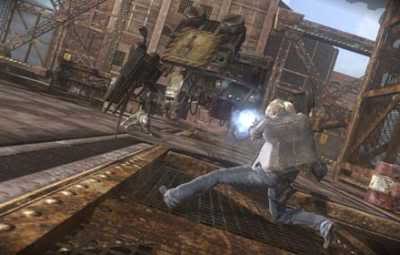
I’ll eventually get to a TGS game I really liked — I swear! But once again, I wanted to focus on a Japanese developer that’s seemingly had a difficult transition from the PS2 to the PS3/360 generation: tri-Ace.
The overlooked developer — formed by refugees from Namco’s original Tales team — delivered two of the best RPGs of the PS1 generation with Valkyrie Profile and Star Ocean. And that success transferred to the PS2 — though not quite on the same level — with games like Radiata Stories and Valkyrie Profile 2: Silmeria.
It’s no secret Japanese RPGs got off to a sluggish start this generation — lord knows I’ve written about it enough personally. But tri-Ace evangelists, in particular, were adamant that this was the developer that would usher in the great Japanese RPGs on the PS3 and 360.
It didn’t quite happen that way.
I actually enjoyed Infinite Undiscovery more than most, but the game felt full of unfulfilled potential and unfinished ideas. And I haven’t played enough of Star Ocean: The Last Hope to make a final judgment personally, but the fact that a lot of reviewers I trust — including Justin Haywald at 1UP — didn’t seem incredibly enamored makes me think I’m not missing too much by keeping it on my “to complete later” list.
Resonance of Fate, the developer’s latest offering, promises something a little different — in theory, at least. The game revolves around a streampunk setting (OK, maybe that’s not all that different!) in which private military contractors play a large role. In Japan, the game’s known as End of Eternity, inspired by the Isaac Asimov tale of the same name — and the likely legal reason for the change to Resonance of Fate in Western markets.
But the TGS demo didn’t take advantage of the potentially intriguing PMC backdrop, instead placing me in what looked to be a postapocalyptic oil refinery. From there, I faced a series of similar-looking rooms fighting off a series of similar-looking enemies — not exactly the recipe for success at a TGS demo. I also found the dungeon movement incredibly sluggish — protagonist Vashyron lurched forward like he was stuck in molasses, which isn’t a good sign when your battle system revolves around real-time combat.

Resonance of Fate’s gun-centric combat is another potentially novel feature, but I found it particularly difficult to attack who I wanted when I wanted. I’m the first to admit that it takes me a while to get the hang of “novel” battle systems, but I can say that it certainly didn’t come off as very user-friendly.
I will say this, though: It’s incredibly difficult to judge trade-show demos sometimes, and that holds doubly true for RPGs. Quite simply, you don’t normally start off most of your RPGs thrust right into a battle scene while a Japanese woman in a skin-tight body suit watches, waiting for the right moment to explain the controls to your ignorant American ass. But for those interested in Resonance of Fate, I’d keep my expectations tempered for now.


